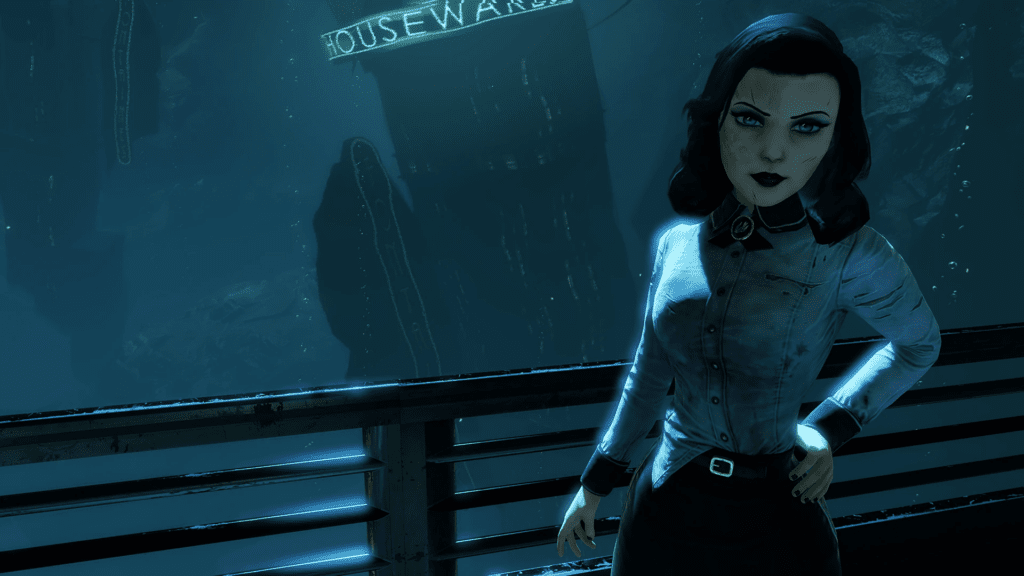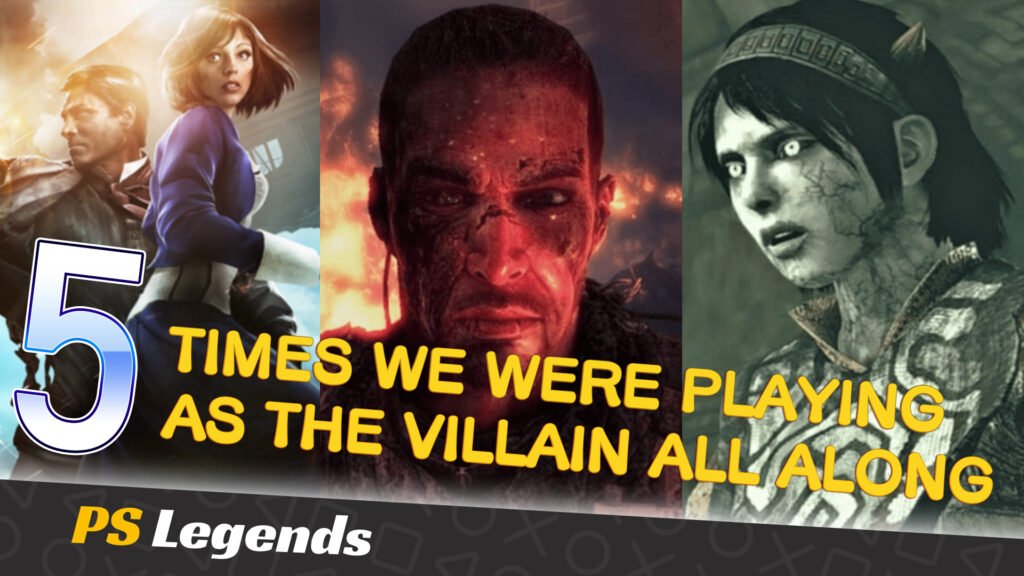Today, we take a look at stories containing the most remarkable of twists, revealing that the protagonist and the antagonist of a game are, in fact, one and the same person. We’re entering absolutely huge spoiler territory here, so if you’re planning a future playthrough of Braid, Shadow of the Colossus, Spec Ops: The Line, Mugen Souls, and/or BioShock Infinite, then it might be worth saving this one for a later date.
Tim – Braid
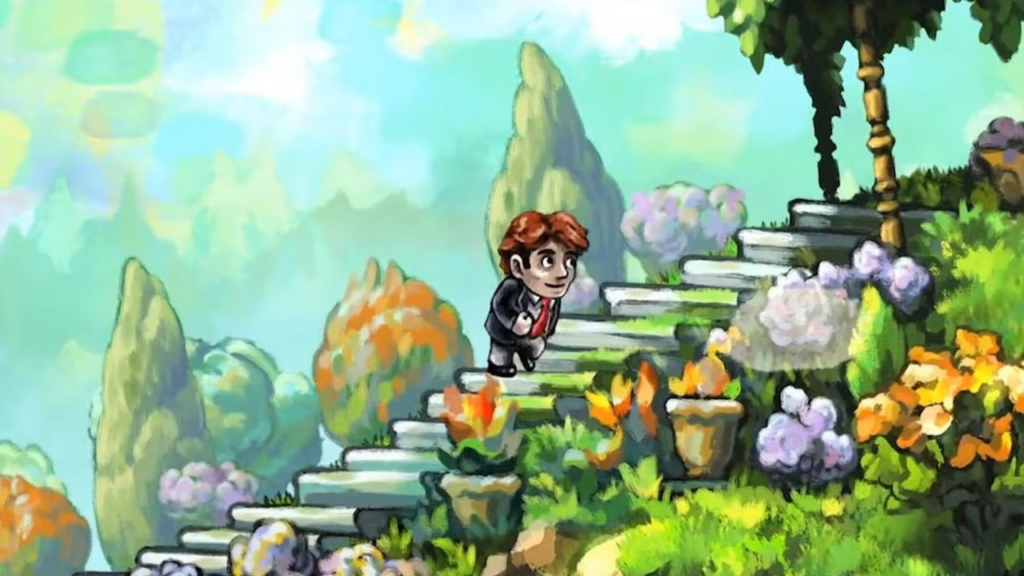
At first, it seems like Tim is your average modern day guy, thrust into a world of gradually increasing fantasy elements as he attempts to rescue a princess from “a horrible and evil monster”. Text passages present throughout the game reveal a multilayered narrative, giving clues about Tim’s motivations. His relationship with this princess is vague at best, with the only clear part of this relationship being that Tim has made some sort of past mistake.
Tim hopes to fix or ideally erase his past errors by utilising unexplained manipulations of time to his advantage. Text at the beginning of each world highlights Tim’s need for forgiveness, his desires, and his frustration. In the final level, which is revealed to actually be the first level played out of sequence, everything but Tim moves in reverse, depicting the princess escaping from a knight, and working with Tim to surpass obstacles and meet at her home.
Once the final sequence of events concludes, Tim is suddenly locked out of the house, and time progresses forward normally, reversing what we thought we saw. These events show the princess running from Tim, setting traps that he is able to evade, until she is rescued by the knight. Tim is revealed to be the “monster” from whom the princess is running.
Wander – Shadow of the Colossus
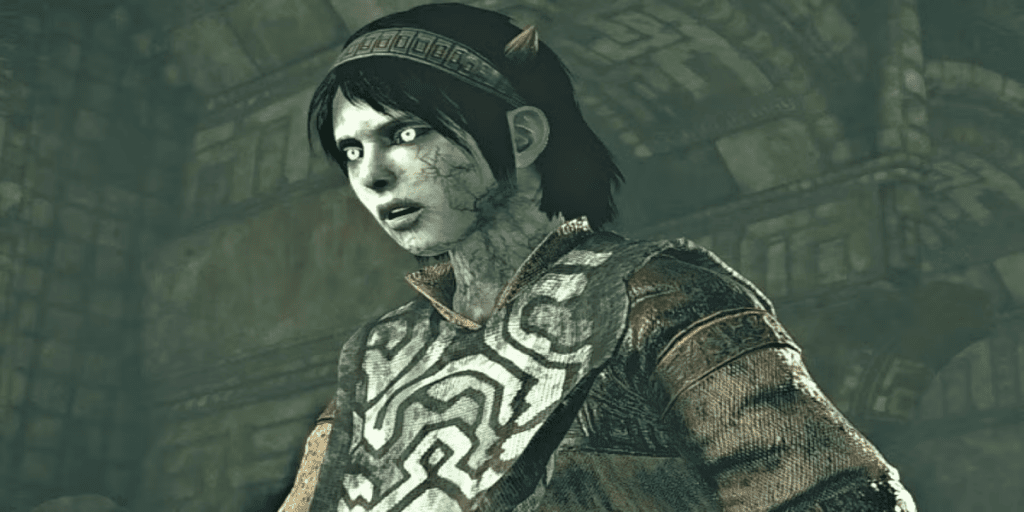
After the priestess Mono is sacrificed because of her supposed cursed destiny, the warrior Wander defies his superiors, steals an ancient ceremonial sword and brings Mono’s body to the “forbidden land”, believed to be home of the old gods. Finding the Shrine of Worship, Wander summons the deity Dormin, and asks the deity to restore Mono to life.
Dormin agrees, though the old god will need Wander’s help to manifest its full power. To unleash Dormin’s power over life and death, Wander must slay the sixteen colossi scattered throughout the land, many hidden in plain sight, as each contains of portion of Dormin’s stolen power. Wander sets out to search the land for the colossi and slay them.
As Wander slaughters each of the previously docile colossi, a released fragment of Dormin enters his body. Over time, the signs of Wander’s deterioration from the gathered essence start to appear; his skin becomes paler, his hair darker, and his face is increasingly covered by dark veins. Wander becomes less and less human, soon becoming a vessel for the vengeful Dormin.
Martin Walker – Spec Ops: The Line

In Spec Ops: The Line, the player takes control of Martin Walker, a soldier in an alternate version of Dubai that has been ravaged by war. The city is now controlled by militant oppressors, including US military deserters, and Walker is tasked with finding one of his fellow soldiers who has reportedly gone insane. However, as the game’s narrative begins to unfold around him, Walker himself becomes more and more unstable.
The ‘fog of war’ causes Walker’s reality to become twisted, including his perception of friend and foe, and even living and dead. His actions gradually switch from heroic to unholy, leading the player to start to question whether Walker is really the person he first appears to be. Walker finally meets the enemy leader ‘Konrad’ at his penthouse, who appears to be the charismatic, villainous force behind the atrocities that Walker was imagining, until Walker finds Konrad’s decaying corpse on the penthouse deck.
Walker finds that Konrad committed suicide after his failed evacuation effort. Walker had been communicating with a hallucination of Konrad created in his mind following the white phosphorus strike that he himself launched, devastating the city and killing dozens of innocent civilians. Trying to rationalise the actions he had witnessed and carried out, Walker distorted many subsequent events of the game to make ‘Konrad’ look responsible.
Chou-Chou – Mugen Souls

Mugen Souls is a more openly obvious tale of villainy. Chou-Chou, the self-proclaimed “undisputed god of the universe” awakens deep in space with little memory of her past. Chou-Chou allies with the evil angel Altis, and Ryuto, a young spaceship captain who falls in love with Chou-Chou after she uses her powers to make him her ‘peon’.
Greedy and egotistical, Chou-Chou sets out on a journey with her companions to conquer the seven shining worlds and make them her own. She achieves this by turning each planet’s hero and demon lord (and even the planets themselves) into her peons, claiming she’s saving the worlds from conflict in the process.
Conquering the worlds actually involves enslaving thousands of innocent people, often transforming them into simple, helpless ‘Shampuru’ creatures. In the sequel Mugen Souls Z, Chou-Chou begins her mission again in a new galaxy, claiming more worlds and even manipulating another goddess, Syrma, to lead her forces after Chou-Chou loses many of her powers.
Booker and Elizabeth – BioShock Infinite

Booker Dewitt was a former ‘war hero’, serving in the 7th Cavalry Regiment where he had performed brutal acts against Native Americans at the Battle of Wounded Knee, all to impress his fellow soldiers. These acts left him emotionally scarred, leading to PTSD, alongside excessive drinking and gambling. He was later dismissed from the Pinkerton Agency for unacceptable behaviour. He was given an opportunity to be baptised and start anew as a born again Christian, but declined.
Suddenly finding himself an unemployed single father, Booker found work as a private investigator in New York, however his substantial gambling debts forced him to make some unfortunate deals with unsavoury characters. Comstock, the wealthy leader of a religious city-state, having gone sterile and desiring an heir, had the Luteces persuade Booker to give his baby daughter Anna to them, in exchange for his debt being paid off.
Booker later regretted his decision, and attempted to stop Comstock and the Luteces, following the group to ‘Columbia’, however they escaped through a dimensional tear which severed Anna’s finger as it closed. The Luteces later contacted Booker and offered him another job: to find and rescue a young woman named Elizabeth who had been imprisoned by Comstock all of her life due to her ability to manipulate dimensional rifts.
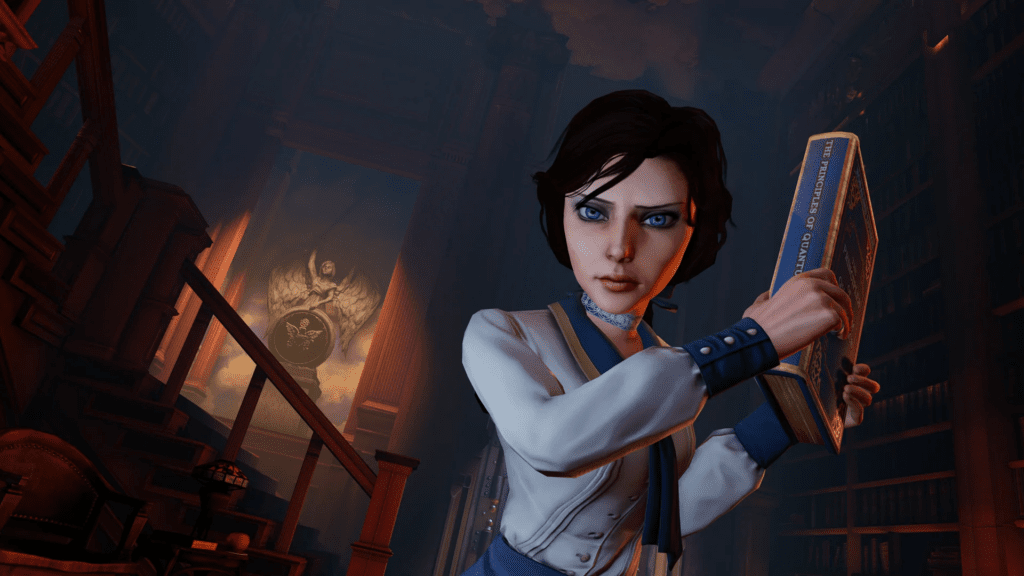
In debt again, Booker accepted the job and travelled to Columbia, freeing Elizabeth from captivity and forging an uneasy alliance with her, unintentionally declaring war on Comstock in the process. Struggling to escape Comstock’s forces and escape Columbia, Booker confronts Comstock and kills him, only for Elizabeth to reveal it was all a setup, as Elizabeth had been manipulating the timeline to turn Booker’s former allies against him, including former US soldier Cornelius Slate and rebel leader Daisy Fitzroy.
Though their timelines had now muddled, Booker is a young Comstock while Elizabeth is an older Anna, and resents her father for his abandonment and later incarceration of her. Unable to forgive himself, Booker surrenders to Elizabeth, who with the support of other Elizabeth variants, drowns Booker where his earlier baptism was supposed to occur, preventing his growth into ‘Comstock’, but deleting her own existence in the process.
In an alternate reality where Anna died in infancy, a depressed Booker would escape using the tears of Columbia, fleeing to the isolated undersea dystopia of Rapture, becoming a private investigator again. However, Elizabeth’s insane quest for revenge would transcend the dimensions and follow him even here, leading to the violent deaths of this Booker, two variants of Elizabeth, and triggering the Rapture civil war of the original BioShock.
